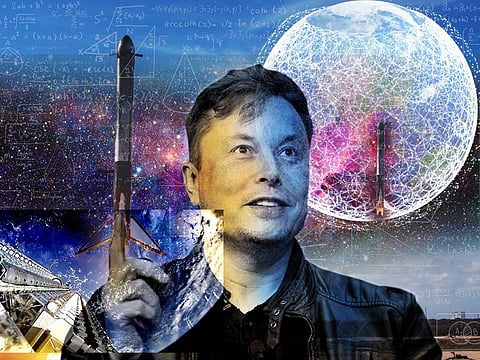Hypergrowth: Starlink subscribers skyrocket to 1.5 million
Will Elon Musk set Starlink on road to IPO, or embed antennas in Tesla EVs too?

Starlink, the satellite internet service of Elon Musk's SpaceX, has hit 1.5 million customers, a phenomenal growth for the company disrupting the telecoms industry, it reported in a tweet on Saturday (May 6, 2023).
SpaceX started launching Starlink satellites in 2019. One of Starlink’s biggest advantages is its global coverage — the service is now available in more than 53 countries.
Its hypergrowth, driven by rave reviews from end-users, proves that next-generation low earth-orbit (LEO) satellites work better than terrestrial cell sites in delivering broadband internet in remote areas.
Since October last year, Elon Musk has also promoted Starlink Aviation, in which SpaceX promises 350Mbps bandwidth and unlimited data for each aircraft it is fitted in.
The company, which ramped up reusable rockets, aims to rollout a global mobile phone service after 2023.
The service is seen as a massive potential cash cow for SpaceX. Now, there’s talk about a Starlink IPO — or initial public offering. More interestingly, there are those who push for embedding Starlink in Tesla electric vehicles.
Game changer
The move to embed Starlink in Tesla — if it happens — could be a game changer, as each EV effectively becomes a high-speed internet access point.
Traditional internet services rely on infrastructure such as cables and cell towers, which may not be available or feasible in certain areas. Starlink uses a constellation of low-earth orbit satellites hovering at an altitude of about 400 km to provide internet access from anywhere in the world.
More countries are clamouring for the service whose key attraction is high-speed and “low latency” internet, key improvements over traditional satellite internet.
The low latency makes it ideal for activities such as gaming, video conferencing, and remote work.
In most places where there’s no internet or even mobile phone service, Starlink provides instant global connectivity — at price point that competes with traditional internet services, especially in areas where the cost of laying infrastructure is high.
Customers pay for the hardware upfront and a monthly fee for the service. Perhaps the biggest draw is tech innovation: Starlink's technology is disruptive. It uses advances in reusable rockets, satellite constellations, autonomous drones, and laser links to provide high-speed web access, especially in hard-to-reach areas.
Bridging digital divide
In remote farms, workplaces, islands and underprivileged communities, Starlink bridges the digital divide.
Lack of internet access is a significant barrier to education, economic opportunities, and social inclusion. Starlink helps address this issue by providing affordable and reliable internet access.
Sign up for the Daily Briefing
Get the latest news and updates straight to your inbox



